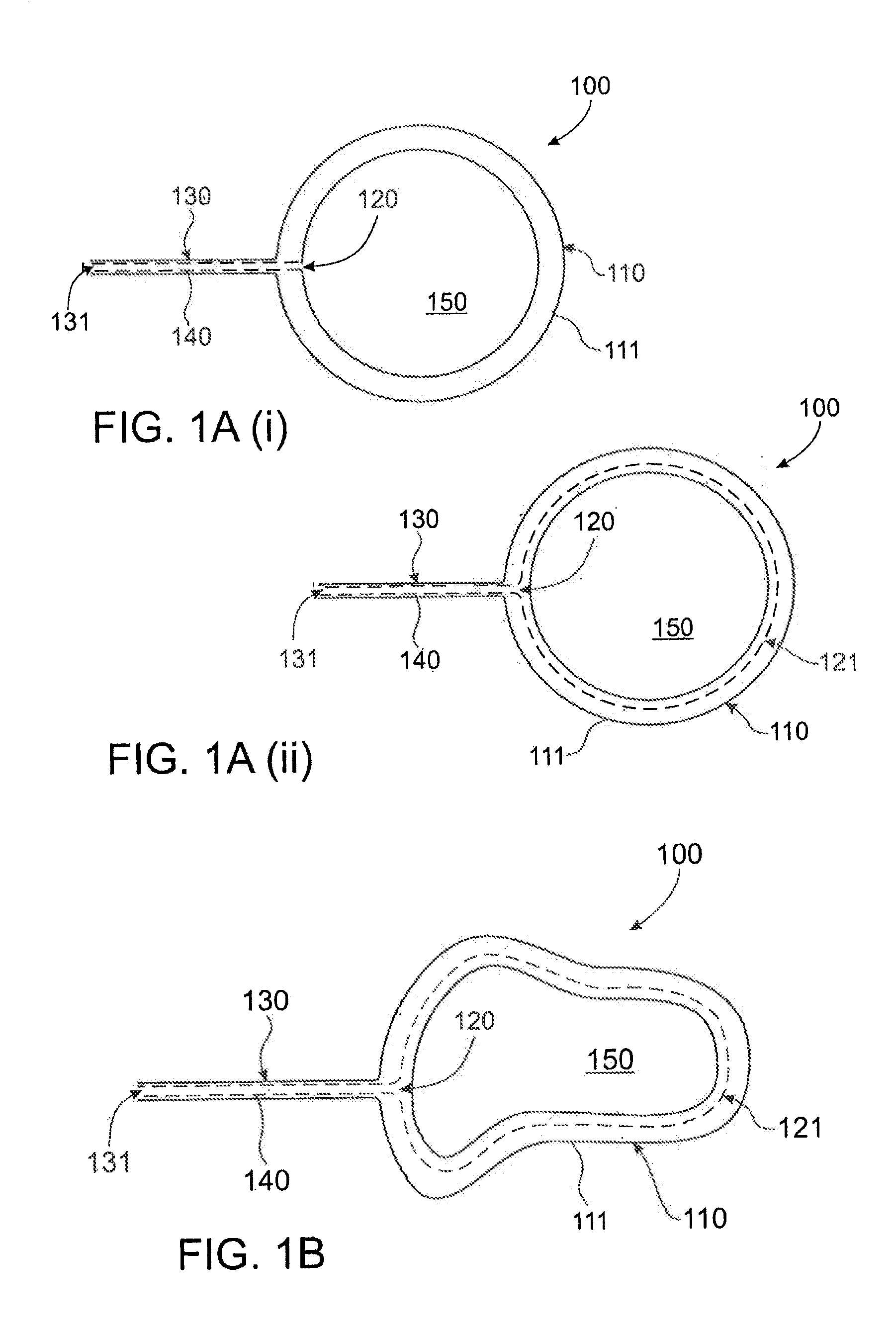Suction retractor
a suction retractor and suction technology, applied in the field of suction retractors, can solve the problems of time-consuming and trauma-causing suture techniques, mechanical retractions that require considerable skill to avoid trauma,
- Summary
- Abstract
- Description
- Claims
- Application Information
AI Technical Summary
Benefits of technology
Problems solved by technology
Method used
Image
Examples
example 1
LiVAC
Liver Vacuum Retraction
[0167]Although not limited thereto, the method of the invention will be further explained with reference to retraction of the liver to expose the organs beneath it during laparoscopic surgery. Retraction of the liver upwards is required in operations performed on the stomach or gallbladder. The retraction is necessary in order to access these organs. When used with the novel suction retractor 100 of the invention this technique is called LiVAC or Liver Vacuum Retraction.
[0168]Laparascopic surgery and open surgery require the application of force against the under-surface of the liver to lift it upwards. In laparoscopic surgery a dedicated tract or port is created for the insertion of the retractor and maintenance of the retraction. The retractor 100 and method 200 of the invention provide a means of retraction of the liver using suction between the upper (superior) surface of the liver, and the diaphragm.
[0169]As shown in FIG. 6A dam 110 may be positioned...
example 2
Acetal Prototype
[0176]Initial testing was conducted using a retractor 100 made of a rigid, acetal ring, similar to the one pictured in FIG. 7A. Testing was performed placing retractor 100 between two halves of a liver. As shown in FIG. 9A, the acetal prototype retractor 100 comprises an inlet 120.
[0177]A spacer 190 comprising a wire mesh disc placed in the middle of the acetal continuous dam 110 aided in separation of the two pieces of liver, therefore maximising the area of liver surface exposed to the vacuum, see spacer 190 shown in FIG. 9B. This proved to be successful.
[0178]The increased force acting on the liver surface by the vacuum meant the hard edges of the acetal ring were causing impressions and tissue damage to the surface of the liver. A chamfer 180 was inserted on the walls 112, 113 to reduce this damage. FIG. 7A shows the acetal prototype retractor 100 and FIG. 7B shows the cross-sectional shape change with addition of chamfer 180. This had very little effect upon the...
example 3
Prototypes 1, 2, 3 and 4
[0187]The results of four prototypes, 1, 2, 3, 4 shown in FIGS. 12A, 12B, 12C and 12D, respectively, in creating a seal with a liver are discussed below.
[0188]As shown in FIG. 12A prototype 1 is circular and has a spacer 190 comprising a series of radial or concentric spacing ribs 194 separated by radial or concentric grooves 194a. Prototype 1 also comprises a central orifice 116. Prototype 1 additionally features a flexible outer lip 193 and a more rigid turreted inner lip 193a.
[0189]FIG. 12B shows prototype 2 which is circular and has rigid outer walls 112, 113, a spacer 190 comprising a series of parallel spacing ribs 195 with small grooves (not visible) along their length and inlet 120 which extends slightly on the exterior of dam 110. The spacing ribs 195 are graduated to allow maximum spacing in the centre.
[0190]FIG. 12C shows prototype 3 which is circular and has a spacer 190 comprising a series of parallel spacing ribs 195 with small...
PUM
 Login to View More
Login to View More Abstract
Description
Claims
Application Information
 Login to View More
Login to View More - R&D
- Intellectual Property
- Life Sciences
- Materials
- Tech Scout
- Unparalleled Data Quality
- Higher Quality Content
- 60% Fewer Hallucinations
Browse by: Latest US Patents, China's latest patents, Technical Efficacy Thesaurus, Application Domain, Technology Topic, Popular Technical Reports.
© 2025 PatSnap. All rights reserved.Legal|Privacy policy|Modern Slavery Act Transparency Statement|Sitemap|About US| Contact US: help@patsnap.com



